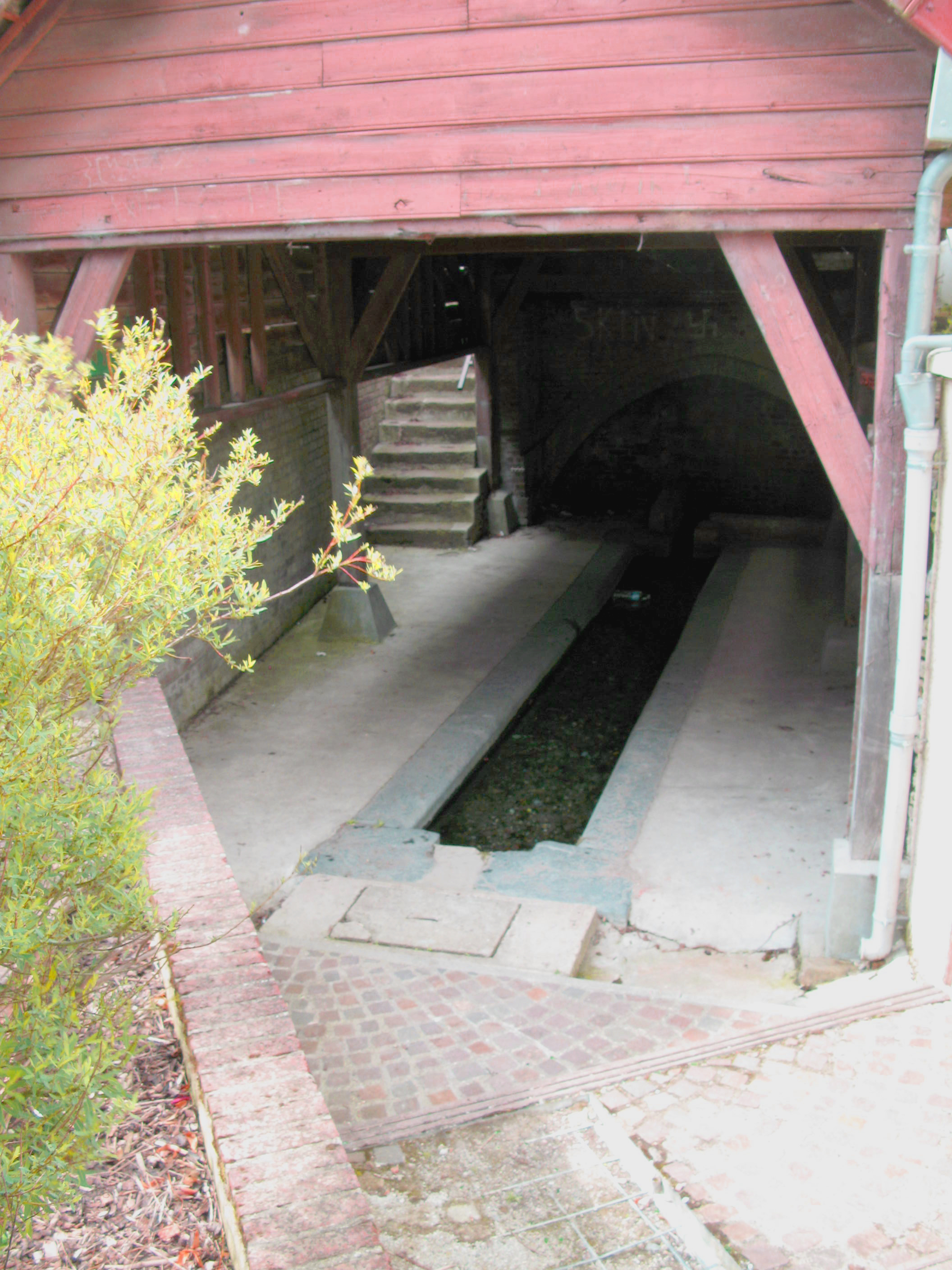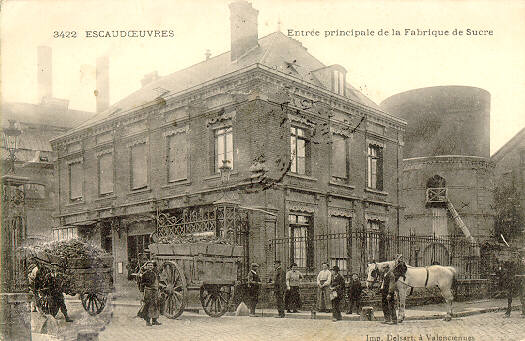|
Réseau Des Bains De Mer
The Réseau des Bains de Mer (, RBM) was a group of five metre gauge railways centred on Noyelles-sur-Mer, with a total route length of some . It was a part of the ''Chemins de fer départementaux de la Somme''. Three of the lines are still open as the Chemin de Fer de la Baie de Somme heritage line, and are dealt with under that article. This article covers the other two lines, now closed. All the lines were in the Somme department. The five lines were:- * Noyelles - Le Crotoy (opened 1 June 1887). * Noyelles - St. Valery sur Somme (opened 5 June 1858 tandard gauge/nowiki>, 6 September 1887 ual gauge). * St. Valery sur Somme - Cayeux sur Mer (opened 6 September 1887). * Noyelles - Forest-l'Abbaye (opened 24 August 1892, closed 10 March 1947 assengers/ 1 February 1951 reight/nowiki> ). * Abbeville - Dompierre-sur-Authie (opened 19 June 1892, closed 10 March 1947 bbeville - Forest-l'Abbaye and Crécy Estrées - Dompierre sur Authie, also to passengers between Crécy Est ... [...More Info...] [...Related Items...] OR: [Wikipedia] [Google] [Baidu] |
Town
A town is a type of a human settlement, generally larger than a village but smaller than a city. The criteria for distinguishing a town vary globally, often depending on factors such as population size, economic character, administrative status, or historical significance. In some regions, towns are formally defined by legal charters or government designations, while in others, the term is used informally. Towns typically feature centralized services, infrastructure, and governance, such as municipal authorities, and serve as hubs for commerce, education, and cultural activities within their regions. The concept of a town varies culturally and legally. For example, in the United Kingdom, a town may historically derive its status from a market town designation or City status in the United Kingdom, royal charter, while in the United States, the term is often loosely applied to incorporated municipality, municipalities. In some countries, such as Australia and Canada, distinction ... [...More Info...] [...Related Items...] OR: [Wikipedia] [Google] [Baidu] |
Drucat
Drucat (; Picard language, Picard: ''Drucot'' ) is a Communes of France, commune in the Somme (department), Somme Departments of France, department in Hauts-de-France in northern France. Geography Drucat is situated on the D82e road, some northeast of Abbeville. Population History There was a station on the Réseau des Bains de Mer, called ''Plessiel-Drucat'', which opened on 19 June 1892 and closed on 10 March 1947. Places of interest *Saint Martin's church. *The recently restored chapel. *Plessiel water-tower Personalities *The composer Jean-François Lesueur (1760–1837) was born at Plessiel, a hamlet within the commune of Drucat. The village hall is named in his honour. See also *Communes of the Somme department *Réseau des Bains de Mer References Communes of Somme (department) {{Abbeville-geo-stub ... [...More Info...] [...Related Items...] OR: [Wikipedia] [Google] [Baidu] |
Chemin De Fer Du Nord
The Chemins de fer du Nord at National Railway Museum website. Retrieved 28 July 2013 ( or ''CF du Nord''; ) often referred to simply as the Nord company, was a company founded in September 1845 in . It was owned by, among others, de Rothschild Frères of France, N M Rothschild ... [...More Info...] [...Related Items...] OR: [Wikipedia] [Google] [Baidu] |
Amiens
Amiens (English: or ; ; , or ) is a city and Communes of France, commune in northern France, located north of Paris and south-west of Lille. It is the capital of the Somme (department), Somme Departments of France, department in the region of Hauts-de-France and had a population of 135,429, as of 2021. A central landmark of the city is Amiens Cathedral, the largest Gothic cathedral in France. Amiens also has one of the largest university hospitals in France, with a capacity of 1,200 beds. The author Jules Verne lived in Amiens from 1871 until his death in 1905, and served on the city council for 15 years. Amiens is the birthplace of French president Emmanuel Macron. The town was fought over during both World Wars, suffering significant damage, and was repeatedly occupied by both sides. The 1918 Battle of Amiens (1918), Battle of Amiens was the opening phase of the Hundred Days Offensive which directly led to the Armistice with Germany. The Royal Air Force heavily bombed the ... [...More Info...] [...Related Items...] OR: [Wikipedia] [Google] [Baidu] |
Nouvion
Nouvion (; or sometimes Nouvion-en-Ponthieu) is a commune in the Somme department in Hauts-de-France in northern France. Geography Nouvion is situated north of Abbeville, between the Somme estuary and the forest of Crécy, on the D1001 (ex-N1 national) departmental road junction with the departmental road D111. Railway Nouvion had a station on the Noyelles/ Forest-l'Abbaye branch of the Réseau des Bains de Mer. It opened on 24 August 1892, and closed on 10 March 1947, although the line itself remained open for freight until 1 February 1951. Media Nouvion is the setting for the BBC sitcom '''Allo 'Allo!'' However, no scenes were filmed in the town, with filming instead taking place in Norfolk in England. Demography See also *Communes of the Somme department The following is a list of the 771 communes of the Somme department of France. The communes cooperate in the following intercommunalities (as of 2025): [...More Info...] [...Related Items...] OR: [Wikipedia] [Google] [Baidu] |
Sailly-le-Sec
Sailly-le-Sec (; ) is a commune in the Somme department in Hauts-de-France in northern France. Geography The commune is situated some east of Amiens, by the banks of the river Somme, on the D233 road. Population History 21 April 1918 - Manfred Von Richthofen, The Red Baron, was finally shot down here. On the night of August 8–9, 1918, as three Battalions of Doughboys from the 33rd U.S. Infantry Division were joining the Allied offensive during the Battle of Amiens, American war poet Lieut. John Allan Wyeth and Lieut. Thomas J. Cochrane were assigned to deliver sealed orders from Division HQ at Molliens-au-Bois to the Field Headquarters of all three Battalions engaged in the attack. The location of each Battalion was unknown, but they were believed to be along the northern bank of the Somme River, near the village of Sailly-le-Sec. Wyeth would later describe the mission in detail in his six interlinked ''Chipilly Ridge sonnets''.Omanson (2019), ''Before the Clangor of ... [...More Info...] [...Related Items...] OR: [Wikipedia] [Google] [Baidu] |
Bray-sur-Somme
Bray-sur-Somme (, literally ''Bray on Somme (river), Somme'') is a Communes of France, commune in the Somme (department), Somme Departments of France, department in Hauts-de-France in northern France. Twin towns It is twinned with Inkberrow. Geography The communes is situated on the D1 and D329 road junction, some east-northeast of Amiens. The commune is surrounded by hills to the east and to the west. To the south, the marshes are crossed by the Somme (river), Somme. The town has been a strategic location over the centuries thanks to the four fords crossing the river here, the old boundary between Artois and Picardy. Population Etymology ''Bray'' is a place name of Celtic origin meaning "marshy land". The name ''Braium'' has been documented since about 630. History Early times Archeological searches have established that the area had Gallic and Roman occupation, confirmed by the weapons and various domestic objects found in and around Bray. In 630, '' Braium'' was unde ... [...More Info...] [...Related Items...] OR: [Wikipedia] [Google] [Baidu] |
Sailly-Saillisel
Sailly-Saillisel () is a commune in the Somme department in Hauts-de-France in northern France. Geography The commune is situated some northeast of Amiens, on the N17 and D172 roads, close to the border with the Pas-de-Calais. History * Theatre of operations of the Battle of Bapaume during the Franco-Prussian War of 1870–71. * Theatre of operations of the Battle of the Somme during the First World War of 1914–1918. Population See also *Communes of the Somme department The following is a list of the 771 communes of the Somme department of France. The communes cooperate in the following intercommunalities (as of 2025):Communes of Somme (department) {{Péronne-geo-stub ... [...More Info...] [...Related Items...] OR: [Wikipedia] [Google] [Baidu] |
Boulogne-sur-Mer
Boulogne-sur-Mer (; ; ; or ''Bononia''), often called just Boulogne (, ), is a coastal city in Hauts-de-France, Northern France. It is a Subprefectures in France, sub-prefecture of the Departments of France, department of Pas-de-Calais. Boulogne lies on the Côte d'Opale, a touristic stretch of French coast on the English Channel between Calais and Normandy, and the most visited location in the region after the Lille conurbation. Boulogne is its department's second-largest city after Calais, and the 183rd-largest in France.Téléchargement du fichier d'ensemble des populations légales en 2017 Institut national de la statistique et des études économiques, INSEE It is also the country's largest fishing port, specialising in herring. Boulogne is an ancie ... [...More Info...] [...Related Items...] OR: [Wikipedia] [Google] [Baidu] |
Râperie
A râperie is a small factory depending on a central sugar factory. In a râperie sugar beet are grated and the juice is extracted before it is transported to a central sugar factory. By 2023 the Râperie de Longchamps, Éghezée, Longchamps connected to the Wanze Sugar Factory in Belgium was the only remaining operational râperie. Characteristics A râperie consists of: * A truck scale, weighbridge for weighing the sugar beet * A reception area where the beet are stored temporarily * An installation to wash the beet * A machine that slices the beet into cossettes (); * Diffusers which extract the raw juice by Leaching (chemistry), leaching. In a final step before transport, some limewater, milk of lime is added to the raw juice to prevent oxidation. The raw juice is then transported to a main beet sugar factory by an underground pipeline. In the main factory the raw juice undergoes the final steps to produce sugar. The hydraulic transport from the râperie to the sugar fact ... [...More Info...] [...Related Items...] OR: [Wikipedia] [Google] [Baidu] |
Phosphates
Phosphates are the naturally occurring form of the element phosphorus. In chemistry, a phosphate is an anion, salt, functional group or ester derived from a phosphoric acid. It most commonly means orthophosphate, a derivative of orthophosphoric acid, phosphoric acid . The phosphate or orthophosphate ion is derived from phosphoric acid by the removal of three protons . Removal of one proton gives the dihydrogen phosphate ion while removal of two protons gives the hydrogen phosphate ion . These names are also used for salts of those anions, such as ammonium dihydrogen phosphate and trisodium phosphate. File:3-phosphoric-acid-3D-balls.png, Phosphoric acid, Phosphoricacid File:2-dihydrogenphosphate-3D-balls.png, Dihydrogen phosphate, Dihydrogenphosphate File:1-hydrogenphosphate-3D-balls.png, Monohydrogen phosphate, Hydrogenphosphate File:0-phosphate-3D-balls.png, Phosphate or orthophosphate In organic chemistry, phosphate or orthophosphate is an organophosphate, an ester ... [...More Info...] [...Related Items...] OR: [Wikipedia] [Google] [Baidu] |





